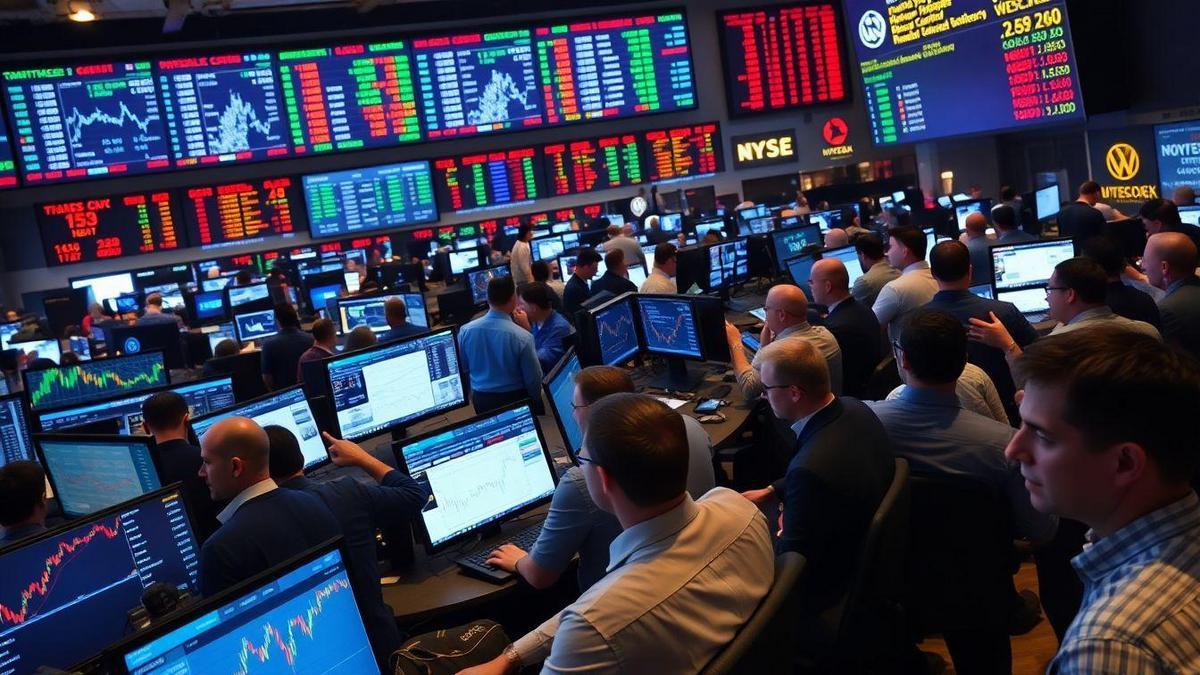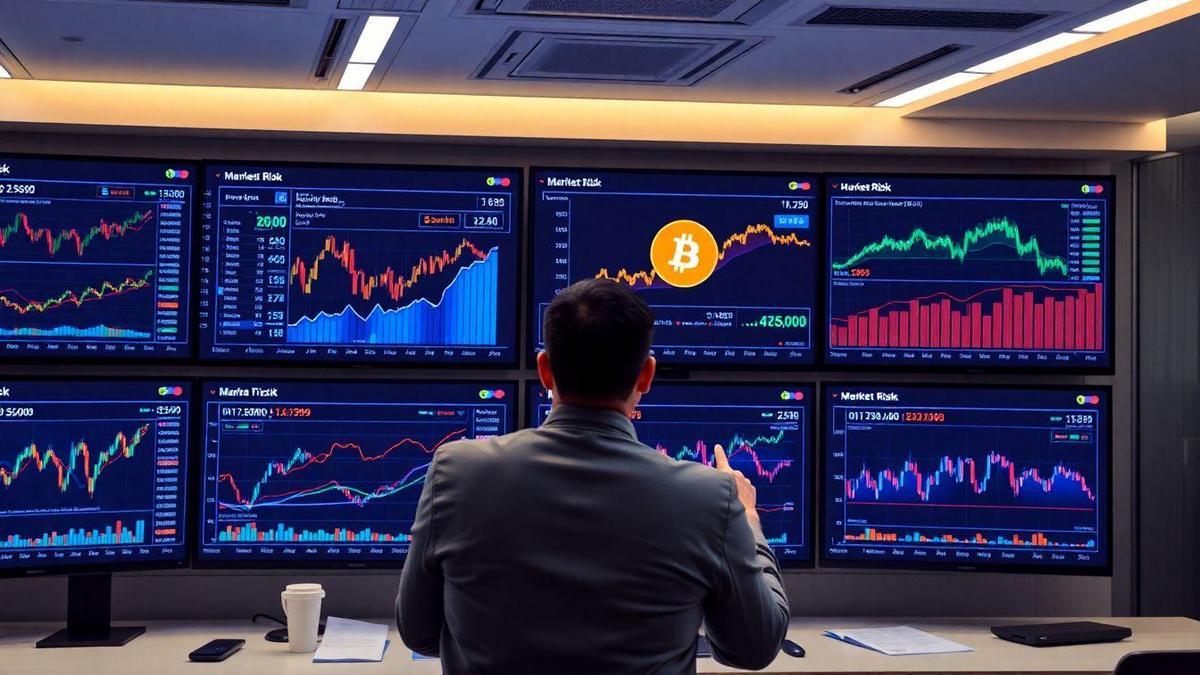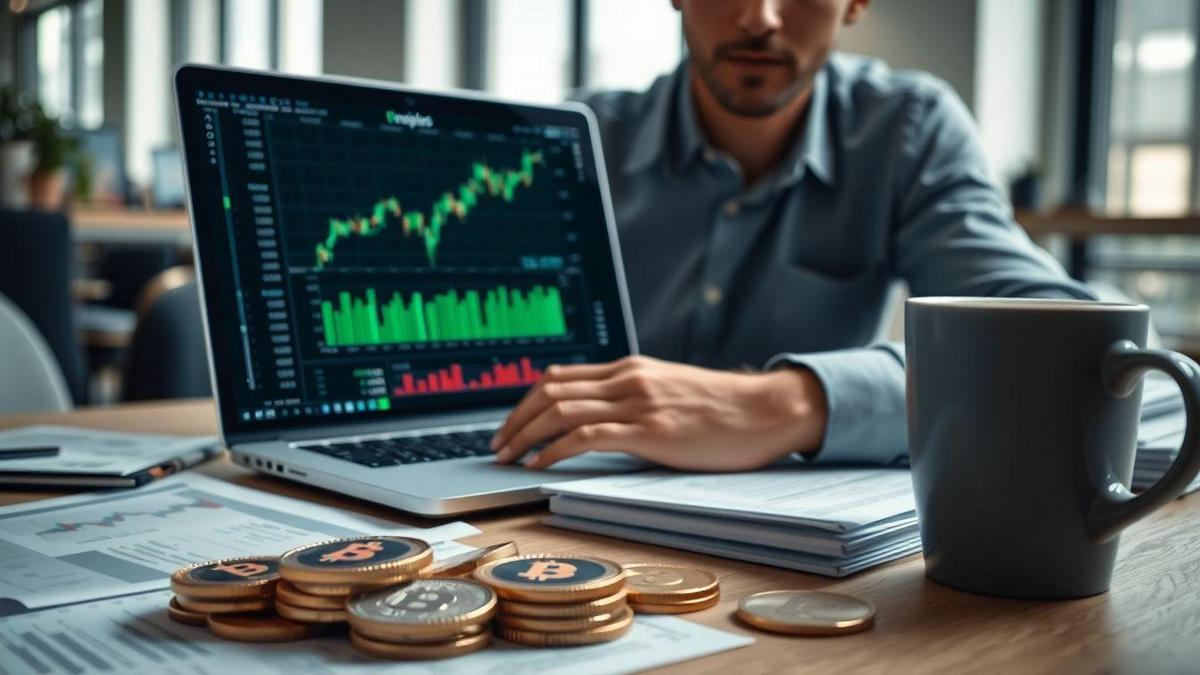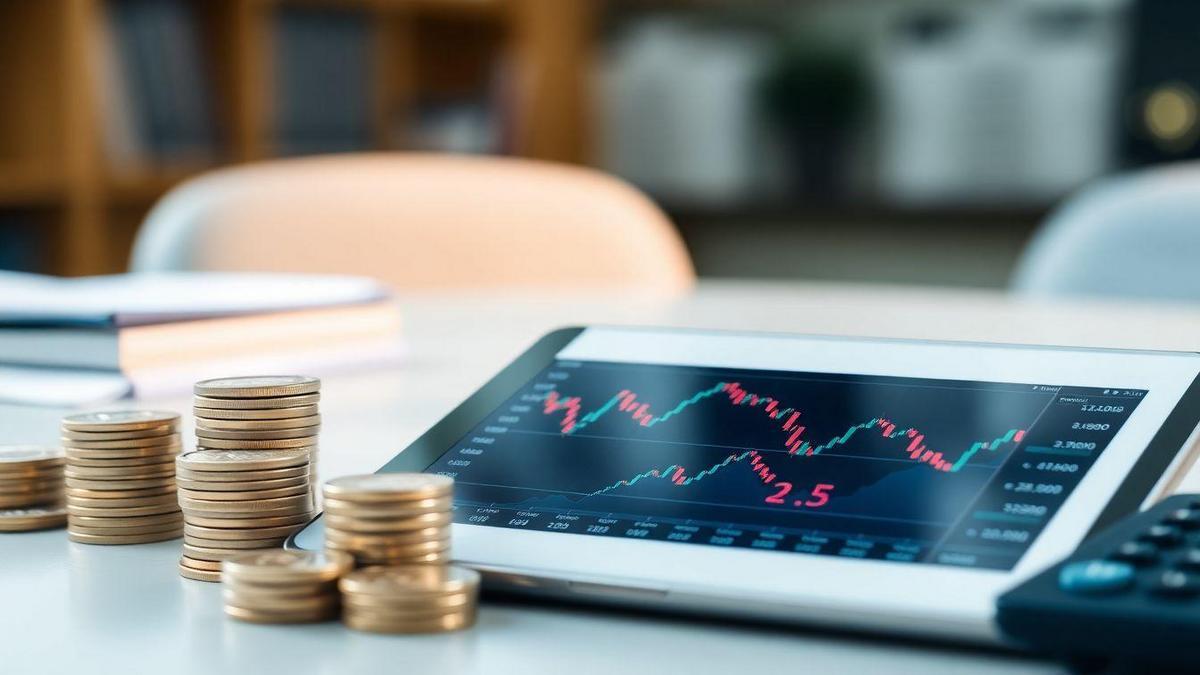Understanding Cryptocurrency Market Volatility for Beginners can feel overwhelming, but it doesn’t have to be! In this article, you’ll dive into what causes fluctuations in crypto prices, how news and events play a part, and why supply and demand matter so much. You’ll discover tips on using volatility indicators and what to look for when choosing the right analysis method. Plus, we’ll go over how to manage your risk and effective strategies for investing in this exciting market. Let’s make sense of it all together!
Important Points to Remember
- Cryptocurrency prices can change rapidly.
- News and events significantly impact prices.
- Always conduct thorough research before buying or selling.
- Invest carefully to avoid losses.
- Stay updated with market trends and news.

What Causes Cryptocurrency Market Volatility?
Key Factors Behind Market Fluctuations
Cryptocurrency prices can swing wildly, and it’s important to grasp what drives these changes. Here are some key factors that contribute to market fluctuations:
- Supply and Demand: If more people want to buy a cryptocurrency than sell it, the price goes up. Conversely, if more want to sell than buy, the price drops.
- Market Sentiment: Investor feelings about the market can have a huge impact. Optimism can lead to soaring prices, while fear can cause plummeting prices.
- Regulatory Changes: New laws or regulations can shake up the market, either boosting confidence or creating panic.
- Technological Changes: Updates or problems with a cryptocurrency’s technology can affect its value. For instance, a security issue can lead to a price drop.
The Role of News and Events
News plays a major role in how cryptocurrencies behave. Events can change the game in an instant. Here’s how:
- Positive News: Good news, like a big company accepting a cryptocurrency, can make prices rise. For example, when Tesla announced it would accept Bitcoin, the price jumped.
- Negative News: Bad news can do just the opposite. If a major exchange gets hacked, it can send prices tumbling down.
- Market Events: Events like the Bitcoin halving, where rewards for mining are cut in half, can create excitement and drive prices up.
Understanding How External Events Affect Prices
External events can shake up the market in ways you might not expect. Here’s a simple table to illustrate some examples:
| Event | Effect on Prices |
|---|---|
| Major Exchange Hack | Prices drop sharply |
| Positive Regulatory News | Prices rise significantly |
| Celebrity Endorsement | Prices spike |
| Economic Crisis | Prices can be unpredictable |
By keeping an eye on the news, you can better understand how these events might impact your investments.

Understanding Crypto Trends for Beginners
Identifying Patterns in Price Movements
When you dive into the world of cryptocurrency, one of the first things you’ll notice is how prices can swing wildly. It’s like a rollercoaster ride! You might see a coin skyrocket one day and plummet the next. So, how do you make sense of all this?
Identifying patterns in price movements can help you spot trends. Here are a few common patterns to watch for:
- Bullish Trends: Prices are rising, indicating a positive market outlook.
- Bearish Trends: Prices are falling, signaling potential trouble.
- Sideways Movement: Prices remain stable, suggesting traders are waiting for the next big move.
By keeping an eye on these patterns, you can start to understand what might happen next.
The Importance of Historical Data
Now, let’s talk about historical data. This is like a treasure chest of information. It shows how prices moved in the past, and it can be super helpful for you. Why? Because history often repeats itself!
Here’s a simple table to illustrate how past data can guide you:
| Time Period | Price Change | Market Reaction |
|---|---|---|
| Last Month | 20% | Bullish Trend |
| Last 6 Months | -15% | Bearish Trend |
| Last Year | 50% | Bullish Trend |
How Past Trends Can Inform Future Predictions
Understanding past trends can help you make better choices in the future. For example, if you notice that a coin tends to rise in price every summer, you might want to consider buying during that time.
Think of it like planting seeds in a garden. If you know that certain plants thrive in certain seasons, you’ll have a better chance of growing a beautiful garden. The same goes for investing in cryptocurrencies.
By looking at how prices have changed before, you can make educated guesses about what might happen next. It’s all about being smart and informed!

The Impact of Supply and Demand
How Scarcity Affects Cryptocurrency Prices
Have you ever heard the saying, “What’s rare is valuable”? When it comes to cryptocurrency, this couldn’t be more true. Scarcity plays a big role in determining the prices of digital coins. Think about it: if a coin has a limited supply, and many people want it, the price is likely to go up.
For example, Bitcoin has a cap of 21 million coins. As more people want to invest, the demand increases, but the supply stays the same. This is why you might see Bitcoin prices shoot up when more folks are interested in buying it.
The Influence of Market Demand
Now, let’s talk about market demand. It’s like a seesaw—when demand goes up, prices often follow. If you wake up one day and see a news headline claiming that a certain cryptocurrency is the next big thing, you might rush to buy it. If everyone feels the same way, demand skyrockets, and so do the prices.
Here’s a simple way to think about it:
| Situation | Demand | Price Reaction |
|---|---|---|
| High demand, limited supply | Increases | Prices go up |
| Low demand, high supply | Decreases | Prices go down |
This table shows how the basic principles of supply and demand work in the crypto world.
Understanding the Basics of Supply and Demand in Crypto
Understanding the basics of supply and demand is key to making smart choices in the cryptocurrency market. When you grasp how these two factors interact, you’re better equipped to navigate the ups and downs of prices.
- Supply: Refers to how much of a cryptocurrency is available.
- Demand: Refers to how much people want to buy that cryptocurrency.
When you put these two together, you get a clearer picture of why prices change. If you keep an eye on both supply and demand, you’ll be more prepared to make decisions about your investments.

Volatility Indicators You Should Know
What Are Volatility Indicators?
Volatility indicators are tools that help you measure how much the price of an asset, like cryptocurrency, can change over time. Think of them as the weather forecast for your investments. Just as a forecast tells you if it might rain or shine, volatility indicators show you how much the price might swing up or down.
Some common volatility indicators include:
- Bollinger Bands: These show you the price range of an asset. When the bands are far apart, it means the price is moving a lot. When they are close together, the price is more stable.
- Average True Range (ATR): This tells you how much the price has moved on average over a certain time period. A high ATR means big price swings, while a low ATR means smaller movements.
- VIX: Often called the “fear index,” it measures market risk and investors’ expectations of volatility.
How to Use Indicators for Better Decisions
Using volatility indicators can help you make smarter choices when trading. Here’s how:
- Identify Trends: If you see a high volatility reading, it might be time to pay attention. This could be a sign that a big price movement is coming.
- Set Entry and Exit Points: Knowing when the price is likely to move can help you decide when to buy or sell. For example, if you see the price is low and the volatility is high, it might be a good time to buy.
- Manage Risk: If you know the market is volatile, you might choose to invest less or use stop-loss orders to protect your money.
The Importance of Monitoring Volatility Indicators
Keeping an eye on volatility indicators is crucial. Here’s why:
- Stay Ahead of the Game: By watching these indicators, you can spot opportunities before they pass you by.
- Protect Your Investment: If you see high volatility, you can adjust your strategy to avoid big losses.
- Make Informed Decisions: Understanding how the market moves helps you feel more confident in your choices.
| Indicator | What It Measures | When to Use |
|---|---|---|
| Bollinger Bands | Price range and volatility | When you want to see price swings |
| Average True Range | Average price movement | To gauge market stability |
| VIX | Market risk and investor sentiment | To understand overall market fear |

Crypto Price Analysis Techniques
Fundamental vs. Technical Analysis
When diving into the world of cryptocurrencies, you’ll often hear about fundamental analysis and technical analysis. These are two main ways to look at crypto prices.
Fundamental Analysis focuses on the big picture. You’ll look at things like the technology behind a coin, the team working on it, and market trends. For example, if a new blockchain project promises to solve major issues in finance, that could be a good sign for its future price.
On the other hand, Technical Analysis is all about the numbers. You’ll study charts and price patterns. This method helps you predict where a price might go based on past performance. Think of it like reading a map before a road trip. It gives you a sense of where you might end up.
Tools for Analyzing Cryptocurrency Prices
There are plenty of tools to help you analyze crypto prices. Here’s a quick list of some popular ones:
- CoinMarketCap: Great for tracking prices and market caps. You can find more about it here.
- TradingView: Offers detailed charts for technical analysis.
- CryptoCompare: Compares different coins and their performance.
You can think of these tools as your roadmap in the crypto landscape. They help you see the paths you can take and where you might want to go.
How to Choose the Right Analysis Method for You
Choosing the right analysis method really depends on your style. Here’s a simple table to help you decide:
| Method | Best For | Example Situation |
|---|---|---|
| Fundamental Analysis | Long-term investors | You believe in a coin’s potential for growth |
| Technical Analysis | Short-term traders | You want to make quick trades based on price movements |
Ask yourself what your goals are. If you’re in it for the long haul, fundamental analysis might be your best bet. If you’re looking to make quick gains, technical analysis could be your go-to.

Market Risk Assessment in Cryptocurrency
Understanding Your Risk Tolerance
When you dive into the world of cryptocurrency, knowing your risk tolerance is like having a map before a journey. It helps you figure out how much you can handle when the market gets bumpy. Think about it: how would you feel if your investment dropped by 20% overnight? Would you panic, or would you stay calm?
To help you gauge your risk tolerance, ask yourself these questions:
- How long do you plan to invest?
- Can you afford to lose some or all of your investment?
- Do you prefer safer, steady gains or are you okay with high risks for potentially higher rewards?
Strategies to Manage Risk in Crypto
Managing risk in cryptocurrency is crucial. Here are some strategies you can use:
- Diversification: Don’t put all your eggs in one basket. Spread your investments across different cryptocurrencies. This way, if one drops, others might hold strong.
- Set Limits: Use stop-loss orders. This means you set a price where you’ll sell if things go south. It helps you avoid bigger losses.
- Stay Informed: The crypto market changes fast. Keep up with news and trends. This knowledge helps you make better decisions. You can learn more about effective risk management strategies here.
| Strategy | Description |
|---|---|
| Diversification | Spread investments across multiple coins |
| Set Limits | Use stop-loss orders to minimize losses |
| Stay Informed | Regularly check news and market trends |
Tips for Conducting a Personal Market Risk Assessment
Conducting a personal market risk assessment doesn’t have to be a chore. Here are some tips to make it easier:
- Know Your Goals: Are you investing for retirement, a big purchase, or just for fun? Your goals will shape your risk approach.
- Review Regularly: Check your investments often. Markets change, and so might your risk tolerance.
- Talk to Others: Discussing with friends or joining online forums can give you insights and help you feel more confident.
By understanding cryptocurrency market volatility for beginners, you can make smarter choices and feel more secure in your investments.

Predictive Analytics in the Digital Currency Market
How Predictive Analytics Works
Predictive analytics is like having a crystal ball for the digital currency market. It uses data, algorithms, and machine learning to forecast future trends. Imagine you’re trying to predict the weather. You look at temperature, wind patterns, and humidity. Predictive analytics does something similar but with data about cryptocurrencies.
It collects information from various sources, such as:
- Price movements
- Trading volumes
- Market sentiment
By analyzing this data, it helps you make informed decisions. For example, if the data shows that Bitcoin’s price tends to rise after a certain event, you might decide to buy before that event.
Benefits of Using Predictive Tools
Using predictive tools in cryptocurrency can be a game-changer. Here are some benefits that can help you navigate the market:
| Benefit | Description |
|---|---|
| Informed Decisions | Make choices based on data, not just gut feelings. |
| Risk Management | Identify potential risks before they become a problem. |
| Market Timing | Know when to buy or sell for better profits. |
| Trend Analysis | Spot patterns that may not be obvious at first glance. |
Imagine you’re at a crossroads. Predictive analytics gives you a map to choose the best path. Instead of wandering aimlessly, you can pinpoint where to go next.
The Future of Predictive Analytics in Cryptocurrency
The future looks bright for predictive analytics in the cryptocurrency world. As technology advances, these tools will become even more sophisticated. Think about it—better algorithms mean more accurate predictions.
You might see:
- Enhanced machine learning models that can adapt to new data quickly.
- Real-time analytics that provide updates as the market changes.
- Broader data sources that include social media trends and news articles.
By harnessing these advancements, you’ll be better equipped to handle market volatility. As you dive into Understanding Cryptocurrency Market Volatility for Beginners, remember that these tools can be your best friends in making sense of the chaos.

Effective Crypto Investment Strategies
Long-Term vs. Short-Term Investing
When you dive into the crypto world, one of the first decisions you face is whether to invest for the long haul or play the short game.
Long-term investing means buying and holding onto your cryptocurrencies for an extended period. Think of it like planting a tree. You water it, nurture it, and eventually, it grows strong and tall. Many investors believe that the value of cryptocurrencies will rise over time, just like a tree bearing fruit. You can explore more about the best cryptocurrencies for long-term investment strategies here.
On the other hand, short-term investing is like a sprint. You buy low, sell high, and try to make quick profits. This approach can be thrilling, but it also comes with risks. Prices can swing wildly in a short time, and if you’re not careful, you might find yourself losing money faster than you can say “Bitcoin.”
Diversifying Your Crypto Portfolio
Now, let’s talk about diversification. Imagine you’re at a buffet. If you only fill your plate with one dish, you might miss out on some delicious options. The same goes for investing. By spreading your money across different cryptocurrencies, you lower your risk.
Here’s a simple table to show how diversification works:
| Cryptocurrency | Percentage of Portfolio |
|---|---|
| Bitcoin | 40% |
| Ethereum | 30% |
| Ripple | 20% |
| Litecoin | 10% |
In this example, you’re not putting all your eggs in one basket. If one coin takes a dive, you still have others that might perform well.
Tips for Developing a Winning Investment Strategy
Creating a winning investment strategy doesn’t have to be complicated. Here are some tips to help you on your journey:
- Do Your Homework: Research different cryptocurrencies. Understand what they do and why they matter.
- Set Goals: Decide what you want from your investments. Are you looking for quick cash, or are you in it for the long run?
- Stay Updated: The crypto market changes fast. Keep an eye on news and trends to make informed decisions.
- Don’t Panic: Prices will go up and down. Stay calm and stick to your plan.
By following these tips, you can navigate the ups and downs of the market with confidence.

The Role of Blockchain in Price Movement
How Blockchain Technology Affects Prices
Blockchain technology plays a huge role in how prices move in the market. It allows for fast and secure transactions, which can help buyers and sellers connect quickly. When people can trade without delays, it can lead to price changes. For example, if a lot of people suddenly want to buy a certain cryptocurrency, the price might shoot up because of the demand. On the flip side, if many people decide to sell, the price can drop quickly.
Here’s a simple table to show how blockchain affects prices:
| Factor | Effect on Price |
|---|---|
| Increased Demand | Price goes up |
| Increased Supply | Price goes down |
| Faster Transactions | Quick price changes |
| Transparency | Builds trust, stabilizes prices |
Understanding Blockchain’s Impact on Market Stability
Blockchain can help keep the market more stable. When everyone can see the transactions, it creates trust. This trust means people are less likely to panic and sell when prices drop. Instead, they might hold onto their investments, which can help prices stay steady.
Think about it like this: If you know what’s happening in the market, you are less likely to make rash decisions. This transparency helps keep the market from going wild.
The Connection Between Blockchain and Cryptocurrency Volatility
Cryptocurrency is known for its volatility. Prices can swing up and down like a roller coaster. Blockchain technology plays a big part in this. While it helps with speed and transparency, it can also lead to quick price changes.
For instance, if a new feature is added to a blockchain, it might make a cryptocurrency more appealing. This could cause a sudden increase in buyers, leading to a price spike. But, if a problem arises, like a security issue, it could send prices plummeting.
Here’s a quick look at how blockchain can connect to volatility:
| Event | Possible Price Reaction |
|---|---|
| New feature launch | Price may spike |
| Security breach | Price may drop |
| High transaction volume | Price fluctuates rapidly |
Conclusion
In wrapping up our journey through Understanding Cryptocurrency Market Volatility for Beginners, it’s clear that navigating this vibrant landscape isn’t just about luck; it’s about knowledge, strategy, and awareness. You’ve learned how supply and demand, news events, and market sentiment can send prices soaring or crashing down. By keeping an eye on volatility indicators and choosing the right analysis methods, you can make informed decisions that align with your investment goals.
Remember, investing in cryptocurrencies is like riding a wave—sometimes it’s smooth sailing, and other times it can be a bumpy ride. But with the right tools and strategies, you can ride those waves with confidence. So, keep your research hat on, stay informed, and don’t shy away from asking questions.
If you’re eager to dive deeper into the world of cryptocurrencies, check out more articles at shopfinancia.com. Happy investing!
Frequently Asked Questions
What is cryptocurrency market volatility?
Market volatility means prices go up and down a lot. In crypto, this happens frequently. You can see big gains or losses in just a few hours!
Why does cryptocurrency change in value so much?
This happens due to many factors. News, market demand, and investor emotions all play a role. When people want to buy a coin, its price goes up. When they sell, it drops.
How can I protect myself from volatility?
You can try a few things. First, do your homework about the coins you like. Second, only invest what you can afford to lose. Lastly, think long-term instead of acting on impulse.
Is it normal to feel scared of market swings?
Yes, it is completely normal! Many people feel nervous during fast market changes. Just remember, this is a part of understanding cryptocurrency market volatility for beginners.
Can I earn money despite market volatility?
Absolutely! If you research and invest smartly, you can still profit. Just keep your emotions in check and stick to your plan.
